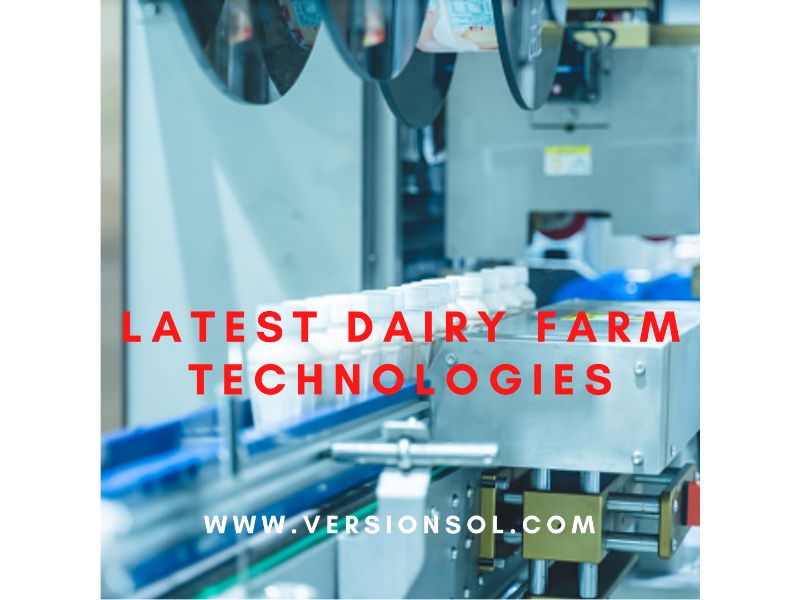Dairy Farm Technology: To enhance profitability, precision dairy farming employs all parts of cutting-edge technology. In order to monitor health, productivity, reproduction, rumen health, and feed consumption. But with precision dairy farming we are now able to measure them for each individual cow. Ensuring that each cow receives the care they require.
Related: Robotics and automation in the food industry
Although it is becoming increasingly evident that technology is the way of the future for dairy. The sheer amount of options available might be bewildering. Dairy farmers can pick from a variety of technologies, including cow wearables. As well as machine learning and augmented reality-based technologies. Such as camera vision, and feeding and milking robotics.
Technologies To Record Data
Dairy farmers have been in charge of cow records since the beginning of the industry. But frequently do not input the information correctly. Dairy farmers can now use new technologies to record data as frequently as every five seconds and generate graphs and insights. This helps dairy producers reduce the amount of time they spend on record-keeping duties. Precision dairy farming technologies are the next stage in farm technology.
Here are a few of the most important dairy farm technology that is revolutionizing the way we collect data in the dairy sector.
Milking by Robots -Dairy Farm Technology
Robotic milking systems, are often known as automatic milking systems. RMS is one of the most well-known innovations in the dairy business. Robotic milking robots not only automate the entire milking process but also collects data. To assist dairy producers in making vital decisions about the care and nutrition of each cow in their herd.
Collars for Rumination
To ensure a seamless transition time, a rumination collar uses a microphone to measure a dairy cow’s rumination. Rumination variations can be an early indicator of calving illnesses. The unfavourable effects of recent ration modifications, cow comfort, and so on. A rumen bolus is a device that detects the temperature and pH in order to detect any systemic infections that require treatment. If a rumen bolus indicates that a cow’s pH is lowering. This can assist a dairy cattle producer in making necessary changes to their diet programme.
Parlour Surveillance
Daily monitoring is possible depending on milk flow by parlour monitoring systems. And some systems can also measure components like daily milk fat and protein. As well as milk quality by measuring somatic cells. If a cow’s milk output begins to decline, the parlour monitoring system can send you an alarm. So you can get a closer look at her and treat or adjust her dairy cattle diet as needed.
Which Farm Technology is the Most Effective?
The decision to adopt technology is influenced by a variety of factors. Including management style, computer familiarity, convenience of usage, housing system type, and perceived benefit-to-cost ratio. Farmers have access to technology that monitors a variety of characteristics, and these technologies often fall into one of many categories:
- Health
- Production
- Environment
There are other categories, and as technology advances, new types of systems for monitoring new factors will emerge. There’s no doubt about it. The latest technologies available to dairy farmers are capable of transforming productivity as well as profits. But in an industry where margins can be thin, where do you find the capital to purchase such innovative technology?
Related: Role of artificial intelligence in the food industry
